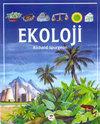Research on the Possibilities of Using Paper Mill Sewage Sludge as an Alternative Seedling Growth Media to Peat
Q3 Environmental Science
引用次数: 2
Abstract
This research was conducted in order for sewage sludge, which complies with the criteria stated in the last 2010 Sludge Regulation on Soil Pollution and its Control, to be used as a seedling growth media. In this research, peat and soil were used as controls, and peat + sewage sludge + perlite and soil + sewage sludge + perlite were mixed at different rates and 8 growing media were prepared for each. Some quality specifications of the tomato seedlings were investigated by determining their nutrient contents in the growth media. According to the research results, the media mixed with peat was found statistically different at the level of p<0.05 in the seedling quality characteristics except for the cotyledon width, and the media mixed with soil was found statistically different at the level of p<0.05 in all the determined seedling quality characteristics. The growth media prepared by mixing peat and sewage sludge proportionately had a positive effect on seedling formation. The O5 media, which contained 40% peat + 50% sewage sludge + 10% perlite, had the best values of seedling length, seedling root length, shoot fresh weight, and root fresh weight. In the soil-controlled media, the M5 media, which contained 40% soil + 50% sewage sludge + 10% perlite, had the best values of seedling root length and root fresh weight.造纸厂污水污泥替代泥炭作苗木生长介质的可能性研究
本研究是为了将符合2010年新版《土壤污染及其控制污泥条例》标准的污水污泥作为育苗介质而进行的。本研究以泥炭和土壤为对照,泥炭+污泥+珍珠岩和土壤+污泥+珍珠岩按不同速率混合,各配制8种培养基。通过测定生长培养基中番茄幼苗的营养成分,探讨了番茄幼苗的一些品质指标。研究结果表明,除子叶宽度外,与泥炭混合的培养基在幼苗品质特征上存在p<0.05水平的统计学差异,与土壤混合的培养基在所有确定的幼苗品质特征上存在p<0.05水平的统计学差异。泥炭与污泥按比例混合制备的培养基对幼苗的形成有积极的影响。40%泥炭+ 50%污泥+ 10%珍珠岩的O5培养基苗长、苗根长、茎部鲜重和根鲜重最佳。在控土培养基中,土壤40% +污泥50% +珍珠岩10%的M5培养基幼苗根长和根鲜重最佳。
本文章由计算机程序翻译,如有差异,请以英文原文为准。
求助全文
约1分钟内获得全文
求助全文
来源期刊

Ekoloji
环境科学-生态学
CiteScore
1.10
自引率
0.00%
发文量
0
审稿时长
>12 weeks
期刊介绍:
Cessation. Ekoloji is an international journal that focuses on papers that report results from original research on all disciplines engaged in the field of environmental research. We welcome articles that cover the entire spectrum of environmental problems and environmental pollutants, whether chemical, biological or physical. Its coverage extends to all environmentally related issues: air and water pollution, solid waste, noise, recycling, natural resources, ecology and environmental protection. It includes articles on basic and applied environmental pollution research, including environmental engineering and environmental health. All types of pollution are covered, including atmospheric pollutants, detergents, fertilizers, industrial effluents, metals, mining wastes, oil, pesticides, plastics, radioactive materials and sewage. It also includes research papers on ecological and environmental issues such as climate change, biodiversity. The primary criteria for publication are scientific quality and ecological/environmental significance.
The journal will be read and contributed to by biologists, applied ecologists, environmental scientists, natural resource specialists, environmental engineers, environmental health specialists, agro-ecologists, veterinaries, agricultural engineers, landscape planners and designers. The journal welcomes full "research papers" and short "research notes", only in the English language.
 求助内容:
求助内容: 应助结果提醒方式:
应助结果提醒方式:


